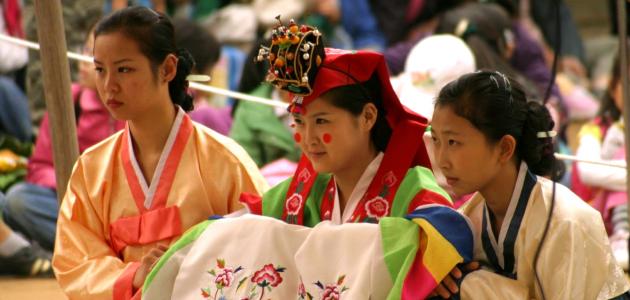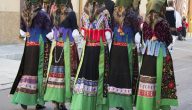عادات وتقاليد اليابان في اللبس بالانجليزي سنتعرف عليها بالتفصيل من خلال هذه السطور التالية .
Japan
A country in East Asia, located between the Pacific Ocean and the Sea of Japan, and the eastern Korean Peninsula. The Chinese called the country the Land of the Shining (source) of the Sun, due to its location in the far east of the inhabited world at that time.
The customs and traditions of Japan in dress in English
(浴衣 – yukata)
• It is one of the types of traditional Japanese clothing that is usually found
What she wears in the summer, more often during
Fireworks shows or Bonn Festival given it
Feeling cold in the summer heat
The yukata is the casual dress worn in
Regular encounters or after going out of the bathroom on the opposite
The kimono, which is often worn on formal occasions
Like weddings
The word yukata means “bathrobe,” but it is not used
It is limited to bathrooms only, but also to a nice extent
Wide range of uses inside and outside the home
Yukata is usually made of cotton to give a feeling
Coolness in summer and cheap
Compared to the kimono which is usually made of silk
Under the yukata is usually worn on the feet
Zuri or Gita when worn outside
(Kimono – 着 物)
• It is the traditional dress in Japan. • The word kimono in the Japanese language means clothes
In general (where ki 着 is a verb with an ambiguous meaning)
(Mono 物 means something) and in this way it is “kimono”, meaning
Meaning the thing that wears) but it is currently used
It is widely used to refer to traditional Japanese dress
The long one worn by men, women and children
Kimonos are known for their beautiful looks and colors
Al Zahia, especially the women’s kimono
The kimono is a garment in the form of a letter
(T)
It reaches ankle length and has a wide collar and sleeves.
The kimono is wrapped around the body so that the left side is above the right side except in
Cases of death and burial, so the right-hand side is above the left and wrapped with a belt to launch
It has the Obi name attached to the back to secure it
Wearing a kimono is usually accompanied by a traditional pair of shoes
Dubbed Zuri Ogita with a pair of tabi thumbs
Children’s recreations
Kiddyland – In Tokyo ‘s Shibuya district, the store stacks up an incredible mess of video games, models and stuffed animals from anime characters like Hello Kitty, Furby, and other Pokemon and Pikachu.
National Children’s Castle – Your little darlings will have a blast in this palace of the Tokyo interactive game: music room to practice their favorite instrument, huge jungle-gym where to let off steam without limit – among other activities.
DisneySea – This Tokyo Disneyland annex (special entrance ticket) requires you to spend a whole day there as the exhibitions abound.
Universal Studios Japan – Japanese version of the famous Hollywood studio, located in Osaka.
Miraikan – Among the major exhibitions of this National Museum of Emerging Science and Innovation in Odaiba, Tokyo Bay, is the real-time display of the country’s seismographic data.
Amazing concepts
Commercial stations – In Shinjuku, Nihombashi, Ikebukuro or Shibya, you will get off the train directly in a large shopping center where shops and national brands share every corner of these mazes in the capital.
Toilets – Far from the traditional toilet – Turkish toilet in the land of the rising sun – the woshuretto borders the hygienic revolution: air-conditioned bezel according to the season, adjustable flushing jet, air dryer, ventilation, massages, not to mention the choice of background sounds to cover the annoying noises. Thrones worthy of an emperor!
Capsule Hotels – Sit in your cell, slide the door and fall asleep … Claustrophobes abstain! Capsule Hotels, we like or hate – it’s up to you.
Distributors – While the concept is not innovative, their number and diversity are unique: more than 7 million machines sell everything from noodle dishes to sex toys to underpinnings. disposable clothes and fresh flowers.
Zen gardens
Koishikawa Korakuen – The oldest park in Tokyo, manicured with care, nevertheless exudes an atmosphere of wild and informal nature.
Shinjuku Gyoen – In Tokyo, besides its admirable cherry groves, you will discern in these gardens of different styles a wide variety of floral and arboreal species.
Daitoku-ji – A set of equally beautiful gardens, the most famous of which, Daisen-in, seems to reproduce a landscape in Indian ink in Kyoto.
Ritsurin-koen – Completed in 1745, this park on Shikoku Island is a beautiful walk.
Ryoan-ji – Kyoto preserves the most famous kare-sensui (dry garden) in the world: its composition of rocks and gravel tends towards an infinite space where the contemplative spirit is supposed to reach the Zen state.
Architectural follies
Fuji TV Building – With its large tungsten sphere, the work of Kenzo Tange erected on the artificial island of Odaiba in Tokyo recalls the interior of a cathode-ray television.
Tokyo Big Sight – While the inverted pyramids of the Odaiba Island Exhibition Center seem to defy the laws of gravitation, they offer an original Tokyo view of the Observation Bar
Umeda Sky Building – In Osaka, you can not miss the twin towers, 173 m high, connected at the top by an impressive atrium bridge.
Acros Fukuoka Center – Under the vegetable waterfall that covers this modern ziggurat lies the cultural center of Fukuoka in Kyushu.
Tokyo Sky Tree – Completed in 2012, the newest skyscraper (634m) may not hold the world record of height – it is only 2 nd behind Dubai’s Burj Khalifa – but it is however the pride of the Japanese who do not tire of going to the Tembo Deck, 350 m footbridge.
Ancestral traditions
Himeji-jo – Like a bird ready to take flight, the sparkling castle of the White Egret, one of the 12 who survived the wars, proudly takes its graceful lines over the Senba-gawa.
Koya-san – On the slopes of Mount Koya, a beautiful forest of mosses and cedars of Japan conceals 117 Buddhist temples, some mausoleums – including that of Kukai, the founding monk of the site – and a vast necropolis where rest near 200,000 samurai, members of the imperial family or mere mortals.
Sumo – If, according to mythology, two gods were the first to oppose in a fight to the death during the creation of the Japanese archipelago, it is certain that this sport was already practiced in the eighth century during rituals Shinto.
Fireworks – Summer rhymes with fireworks as evidenced by the most beautiful of all, that of Sumida-gawa in Tokyo (late July).
Matsuri – To thank the gods or seek their protection, festivals and festivals punctuate the calendar of the Japanese.
High-tech innovations
Shinkansen – When it went into service in 1964, this Japanese TGV (210-320 km / h), operating on a dedicated line network, made Japan the pioneer of high-speed trains.










